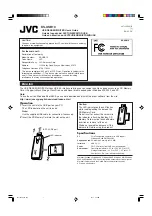
Appendix B
Common Questions
6711/6713/6715 User Manual
B-2
www.ni.com
What type of 5 V protection does the 671X device have?
The 6711/6713 device has 5 V lines equipped with a self-resetting 1 A fuse.
The 6715 device has 5 V lines equipped with a self-resetting 0.75 A fuse.
Installation and Configuration
How do you set the base address for the 671X device?
The base address of the 671X device is assigned automatically through the
bus protocol. This assignment is completely transparent to you.
What jumpers should I be aware of when configuring my
671X device?
The 671X device is jumperless and switchless.
Which National Instruments document should I read first to get
started using DAQ software?
Your NI-DAQ or application software release notes documentation is
always the best starting place.
Analog Output
I’m using the DACs to generate a waveform, but I discovered with a
digital oscilloscope that there are glitches on the output signal. Is this
normal?
When it switches from one voltage to another, any DAC produces glitches
due to released charges. The largest glitches occur when the most
significant bit (MSB) of the D/A code switches. You can use a lowpass
deglitching filter to remove some of these glitches, depending on the
frequency and nature of your output signal. In addition, if you are using this
output as a source to a system that has low bandwidth characteristics, the
glitches are ignored by the system.
Timing and Digital I/O
What types of triggering can be hardware-implemented on my 671X
device?
Hardware digital triggering is supported on the 671X device.
What functionality does the DAQ-STC make possible?
The DAQ-STC has the complexity of more than 24 chips. The DAQ-STC
makes possible PFI lines, selectable logic level, and frequency shift keying.
Artisan Technology Group - Quality Instrumentation ... Guaranteed | (888) 88-SOURCE | www.artisantg.com
















































